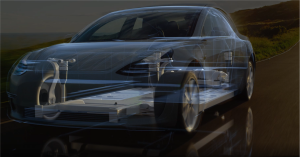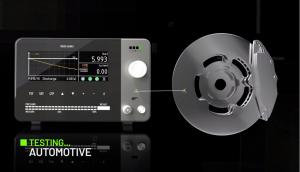The importance of Leak Testing on electric car batteries
The importance of Leak Testing on electric car batteries
MODENA, ITALY, ITALY, January 18, 2023 /EINPresswire.com/ -- Behind every successful high-quality product lays extensive testing. That is why great manufacturers invest time and money into the testing process.
Although one of the most important quality control checks carried out by automakers and suppliers has traditionally been leak testing, Even more, careful testing is necessary for electric-powered systems.
The most difficult Electric-Vehicule component to check for leaks is the battery pack (Cells + package).
Battery testing service providers are overwhelmed by the growing EV production rate.
As more original equipment manufacturers (OEMs) and suppliers race to create EVs, they have recently been saturated with projects.
Production of lithium-ion battery cells is anticipated to rise from 280 GWh in 2017 to 2,600 GWh in 2030.
The producers of EV batteries are under increased pressure to increase production volumes without compromising quality or safety as a result of this rapid growth forecast. In addition to strict manufacturing restrictions, quality testing without industry standard criteria is a barrier for manufacturers. Many are having trouble coming up with workable testing methods due to the lack of EV battery leak testing guidelines.
Just like Gas and fire don't get along together in an unprotected environment. Batteries and water have a similar story. A very little amount of water vapor can harm the lithium-ion battery cells in an EV.
Since the majority of battery pack enclosures for EVs are built into the vehicle's chassis, they are particularly vulnerable to moisture from road surfaces including water, dirt, snow, and ice.
To solve the problem, battery trays and covers must be properly sealed, which is something that EV distributors and manufacturers must do. In the installation of battery cells, modules, and packs, leak testing is crucial.
For at least ten years, batteries must be sealed tightly and shielded against moisture, water, and other liquids.
Because battery cells can catch fire from the extremely flammable electrolytes they contain, precise leak testing is essential. A battery module can short circuit, limit service life, and perform poorly, reducing a vehicle's range, even with very minimal levels of humidity present.
As stated above, the cells, modules, cooling elements, and pack assemblies that make up the final structure of an EV battery are all susceptible to leakage. Part size, acceptable leak rate, and temperature are always important factors.
That is why Leak-testing goes through two stages:
Manufacturers employ both end-of-line and in-process automatic leak tester equipment.
The latter performs several production cycle phases of testing on parts and subassemblies.
The former is the final inspection before a finished product is shipped from the production site. When a test finds a faulty device, it must either be fixed or discarded.
Each battery subassembly, including the cells, cooling plates, cooling circuits, venting valves, trays, and covers, must undergo an in-process leak test.
In-process leak testing is quick and offers immediate information on the processes that have an impact on the leaks. After final construction, several battery components, such as the cells, are not accessible and must first undergo leak testing. Before inserting cells and modules into a battery tray, it's necessaryto check if it leaks for financial cost reasons.
Through in-process testing, quality controls checkers have to identify issues with heat exchangers, electrical feedthroughs, cooling circuit pipework, and lids. Leak test stages cannot be substituted for one another.
The main advantage of end-of-line leak testing is that it prevents consumers from receiving faulty goods. The dealership will be the next testing location if neglect this type of leak test. Due to range anxiety and fire concerns, consumers are already suspicious about EVs.
Because a coolant circuit leak won't be discovered while the cover leak test is being conducted, the in-process test is crucial. In order to confirm the accuracy of the battery pack construction process, the two tests are necessary.
The battery pack typically runs at high voltage, and water and humidity can cause a catastrophe. Now that the requirement to prevent water and humidity from accessing the battery is abundantly evident.
Partnering up with a guaranteed leak testing service that pays attention to the tiniest details while respecting customer's productivity requirements is crucial.
Catch the leak with ForTest.
Stefano Coni
ForTest Italia Srl
+39 059 557250
email us here
The Dual Absolute Revolution for Automotive - ForTest
Legal Disclaimer:
EIN Presswire provides this news content "as is" without warranty of any kind. We do not accept any responsibility or liability for the accuracy, content, images, videos, licenses, completeness, legality, or reliability of the information contained in this article. If you have any complaints or copyright issues related to this article, kindly contact the author above.



